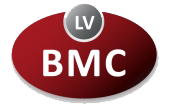
Project Title: „Development of anti-myostatin vaccine for promotion of livestock animal muscle growth”
Funding: European Regional Development Fund (ERDF), Measure 1.2.1. Specific support goal “To Increase the Private Sector Investments R&D”; measure 1.2.1.2. “Support for Improvement of Technology Transfer System” “Industry‑Driven Research”
Project Nr.: KC-PI-2020/23
Technical and economic feasibility study and the development of commercialisation strategy that will be accomplished within the first 6 months (19 th July 2017 – 19 th January 2018)
Project costs for first period: : 22 896.83 (ERDF- 20 607.15, BMC – 2 289.68)
Project costs for second period: 310 436,5 EUR (ERAF -279392.85, BMC -34492.94)
Principle Investigator: Dr. biol. K. Tārs
In the technical and economic feasibility study we plan to (1) estimate the potential market; (2) estimate the final price of the product and compare it to the prices of other growth promoters and commercial benefits; (3) evaluate the technical risks during the project implementation; (4) estimate possibilities of patenting, licensing the patent and licensing the up-scale technology; (5) perform other studies, which might be considered by feasibility study experts. We plan to outsource the performance of technical and economic feasibility study to a suitable company.
In this project we propose to use a virus-like particle (VLP) based vaccine, targeting myostatin. VLPs have been used earlier as promoters of immune response and coupling of antigens to them can efficiently overcome tolerance to self-antigens. We have previously demonstrated effectivity of VLP-based vaccines against a variety of diseases, such as Lyme disease and atopic dermatitis in dogs. Our vaccine will consist of correctly folded, recombinant mature myostatin, coupled to VLPs of ssRNA bacteriophages. We expect our vaccine to trigger the production of auto-antibodies against and myostatin, deplete myostatin levels and therefore result in an increase of muscular mass. The costs of such vaccine would be much lower than MAbs and it could be potentially commercially viable, since VLPs and myostatin can be produced in cheaper expression systems such as yeast or Escherichia coli instead of mammalian expression system as is the case with MAbs. Additionally, we believe that combination of VLPs and correctly folded myostatin will lead to substantially higher antibody titers and better muscle growth promotion compared to previously reported vaccine candidates.
Information published 31.03.2020.
31.03.2020. – 30.06.2020.
Procurement regulations have been prepared for the procurement “Feasibility study and commercialization strategy development service”. The procurement was announced on the website of the Procurement Monitoring Bureau during the period from 18.05.2020. until 29.05.2020. SIA “KPMG” was recognized as the winner in the procurement. The contract has been concluded and is being executed.
Information published 30.06.2020.
31.07.2020. – 30.09.2020.
During the reporting period continue work to the development of the Technically Economic feasibility study and the Commercialisation strategy with “KPMG Baltics”
Information published 30.09.2020.
As of 01.12.2020. the implementation of the 2nd stage of the project has started.
The aim of the project is to develop a technology for increasing the muscle mass of livestock. The technology will be based on blocking myostatin activity. Myostatin is a naturally occurring protein in the body that inhibits excessive muscle growth in all mammals. Cattle with an inactive myostatin gene show marked muscle hypertrophy but no other adverse effects except labour problems. The solution proposed by the BMC team involves the use of virus-like particles to stimulate the formation of autoantibodies that block myostatin function in livestock. No similar vaccines are currently available on the market. The project will develop an initial vaccine candidate and test its effectiveness in mice. If a significant increase in muscle mass is found in mice, the technology will be patented and patented to interested manufacturers.
Information published 01.12.2020.
The following has been acieved in the project:
- Produced and purified virus-like particles (VLPs) of bacteriophages Qβ, AP205 and ESE001
- In E. coli produced and purified murine myostatin precursor
- Murine myotatin precursor cleaved and mature form purified in analytical amounts
Information published 26.02.2021.
The following has been acieved in the project:
- In preparative amounts produced and purified murine myostatin precursor and mature myostatin
- Murine myostatin chemically coupled to VLPs of bacteriophages Qβ and ESE001 for downstream immunization of animals
Information published 31.05.2021.
From 01.06.2021-31.08.2021, The following has been acieved in the project:
- Mice immunized with pro- and mature myostatconjugates with VLPs
- Optimization of production of pro- and mature forms of myostatin in various expression systems
- Optimization of fermentation of Qβ and ESE001 VLPs
Information published 31.08.2021.
From 01.09.2021-30.11.2021, The following has been acieved in the project:
- Determination of antibody titers after immunization with mice pro- and mature myostatconjugates with VLPs
- Evaluation of mucle mass increase and fat mass decrease after immunization
- Consultations with representatives of project interested Swiss company SAIBA AG
Information published 30.11.2021.

